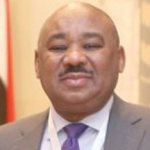This paper asks whether the choice of the exchange regime matters for macroeconomic stabilization in the aftermath of civil conflicts. This important aspect of the macroeconomic agenda for post-conflict countries has been largely ignored by the literature. Using a panel of 132 countries (38 post-conflict countries and a control group of 94 economies) in the period 1970-2008 we estimate the effect of the main exchange rate regimes (fixed, managed floating and free float) on the demand for money balances and inflation. The optimality of the three Exchange rate regimes was assessed in terms of their capacity to create an ‘enabling’ policy environment for aid effectiveness in promoting the re-monetization and inflation stabilization of post-conflict economies. The evidence broadly suggests that the managed floating regime appears to have an edge.
ملخص
تتسأل هذه الورقة عما إذا كان اختيار نظام الصرف يعد هاما للانتعاش الاقتصادي في أعقاب الصراعات الأهلية. تم تجاهل هذا الجانب الهام من جدول أعمال الاقتصاد الكلي للبلدان في مرحلة ما بعد الصراع إلى حد كبير من الأدب. باستخدام مسح من 132 بلدا (38 بلدا في مرحلة ما بعد الصراع ومجموعة تحكم من 94 اقتصادا) لفترة 1970-2008 نقوم بتقدير تأثير نظم أسعار الصرف الرئيسية (الثابتة، التعويم المدار والتعويم الحر) على أرصدة الطلب على النقود والتضخم. وجرى تقييم تحقيق الشكل الأمثل لنظم أسعار الصرف الثلاث من حيث قدرتها على خلق "تمكين" لبيئة السياسات لقياس فعالية المعونة في تعزيز إعادة التسييل واستقرار التضخم فى اقتصادات ما بعد الصراع. وعلى نطاق واسع توحي الأدلة بأن النظم العائمة قد يكون لها ميزة أكبر.

Research Fellows
Ibrahim Elbadawi
Managing Director, Economic Research Forum

Senior Associates
Raimundo Soto
Associate Professor of Economics, Pontificia Universidad Católica...


